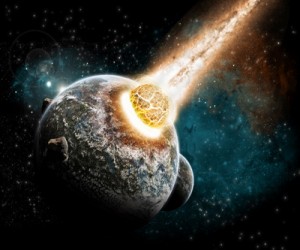
Platts reports Thursday China will start forcing rare earth producers out of business if they don't qualify for new value-added tax permits being allocated from May 1.
Officially it's China's latest bid to curb resource plundering, dangerous artisanal mining and widespread pollution.
China produces over 95% of the world's REEs used in a variety of industries including green technology, defence systems and consumer electronics.
Platts quotes one Chinese industry source as saying: "We believe it is a start that China will undertake to regulate the country's rare earth production, however there is a long way to go."
Cleaning up the notoriously dirty rare earth business in China is laudable, but the latest regulations are probably aimed more at trying to stop chronic overproduction of REEs in Sichuan and Inner Mongolia, which have recently led to an implosion in export prices.
Official output quotas in place since 2007 are readily exceeded by 40% – 50% each year. While prices have been moderating since the record levels of Q3 2011, in 2012 prices for many rare earths are close to collapsing.
Abundant, less valuable REEs such as lanthanum have experienced the sharpest reversals.
Lanthanum oxide – used in ceramics and fuel catalysts – for example rose from a price of just $8.71/kg in 2008 to $117/kg in the third quarter last. At the start of 2012 it had pulled back to $66/kg.
Now it has halved again – on Monday a kilogram of lanthanum could be picked up for $26. That's a 77% collapse in less than nine months. And consider that inside China that same kilogram costs half $13.15.
When export prices of lanthanum were at record highs of $117/kg domestic Chinese prices were less than $20. That differential has gone from almost 10 times to less than double.
This price behaviour can be seen across the board.
Cerium oxide used to polish TV screens and lenses is now also trading at $26 from all-time highs of $118 in the September quarter last year and just under $60 in Q4. The price for cerium oxide was $4.56 in 2008.
Heavy and scarcer REEs have generally held up better, but many have experienced price declines of 50% or more.
Neodymium oxide used in windmills have seen a dramatic slump – from $338/kg in Q3 2011 to $120/kg as at 23 April.
A hybrid vehicle ingredient, dysprosium rocketed from a price of $118.49/kg in 2008 to $921.20/kg in the third quarter of 2011 and $2,262/kg by September last year.
Dysprosium, also used in conjunction with vanadium and other elements in making laser materials, has now given up more than $1,000 per kilogram and went for $1,170 this week. The price is also now much more in line with domestic Chinese prices of $729/kg.
The reversal in europium oxide – the priciest REE which is used in medical imaging and the nuclear and defence industries – has been most startling.
The price of europium increased almost 10-fold from $492 in 2009 to average $4,900 in the third quarter of 2011. Three months later it dropped $1,100 in price and is now worth $2,420 a kilogram. Chinese domestic europium is another $1,000 cheaper at $1,315/kg.
While producers of flat screen TVs, hospital scanners, jet fighter electronics and sophisticated laser systems must be rejoicing rare earth mining heavyweights like Molycorp and juniors like Quest and Avalon cannot be too thrilled by events.





